Northern Flicker (Colaptes auratus)
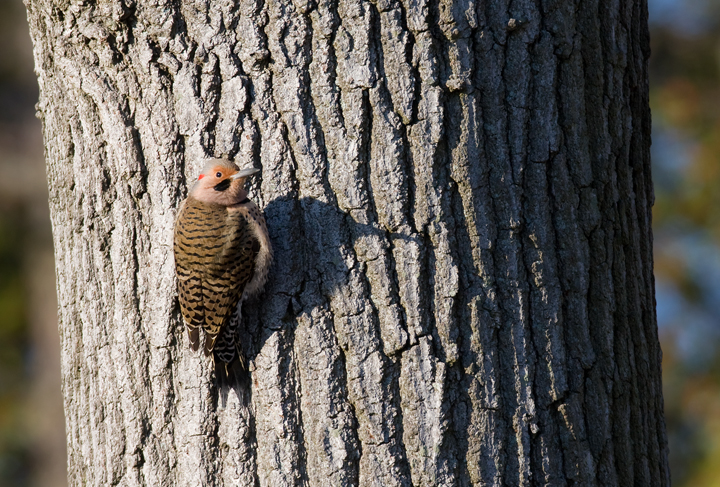
Above and below: A male Northern Flicker at Fort Smallwood Park, Maryland (1/31/2009).
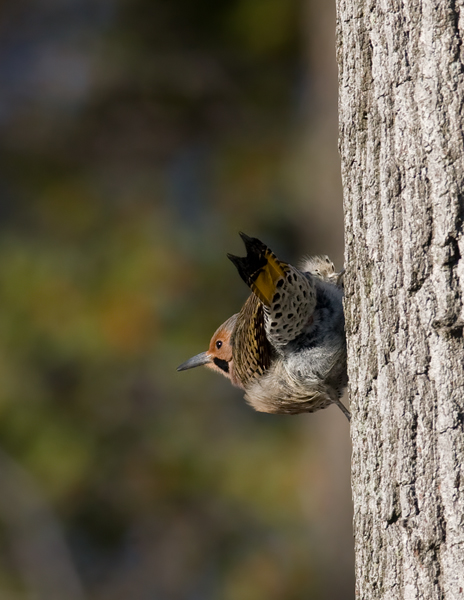
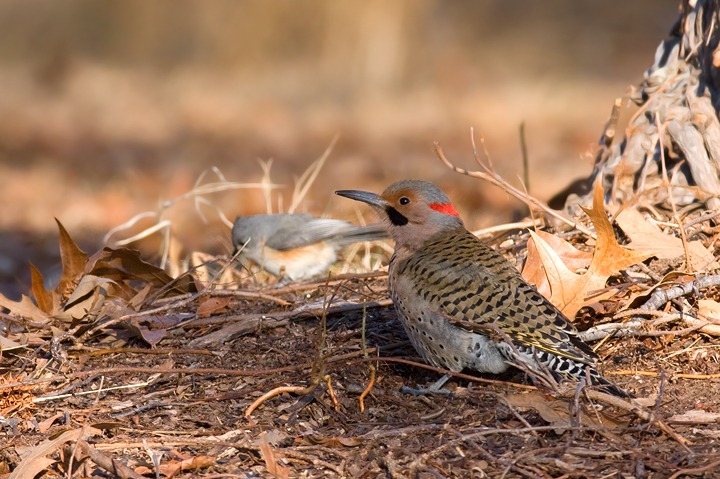
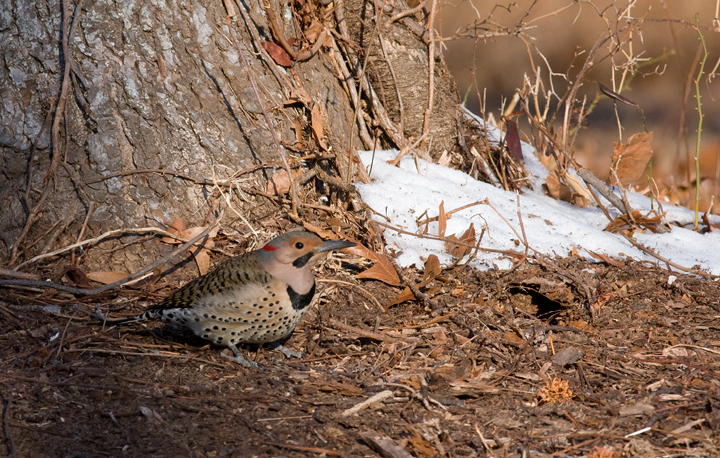
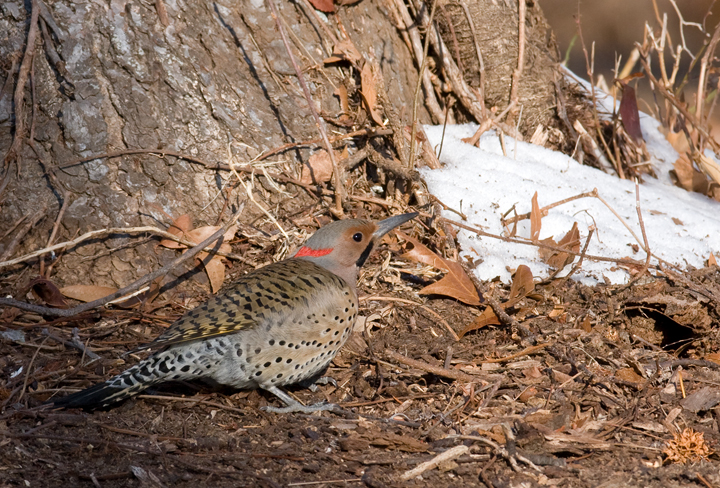
Below: Northern Flicker - Caught sleeping!
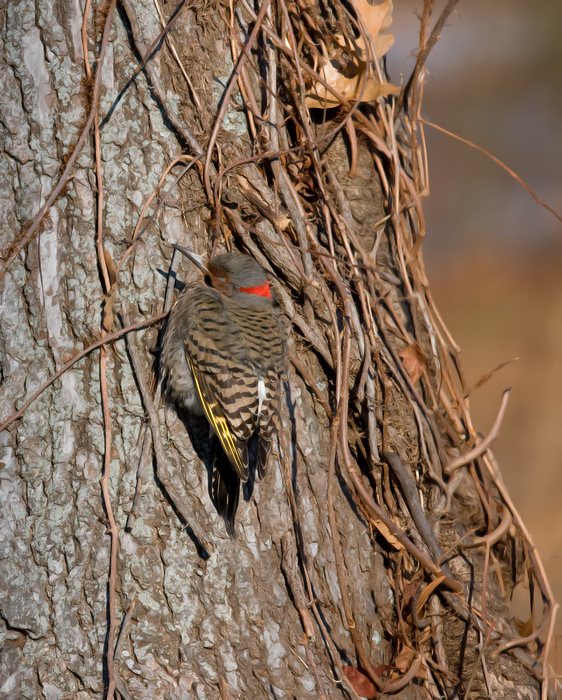
Yellow-shafted Flicker
Below: A male Northern Flicker in flight over Assateague Island, Maryland (11/9/2008). With wings fully extended, you can see the yellow shafts of the feathers that give our eastern birds their subspecies name, Yellow-shafted Flicker.
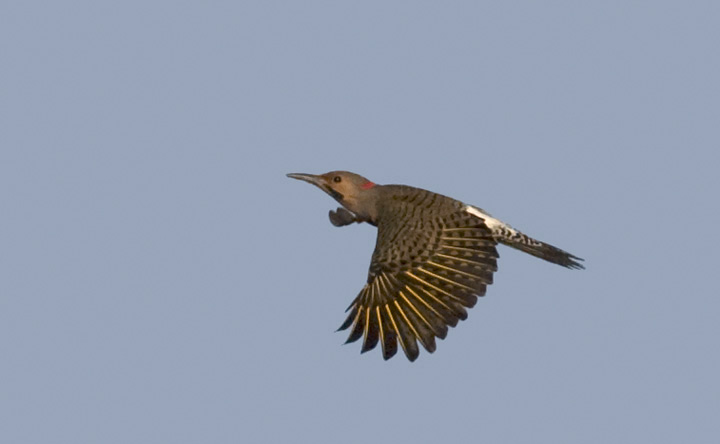
Below: A Northern Flicker in flight over Assateague Island, Maryland (10/22/2011).
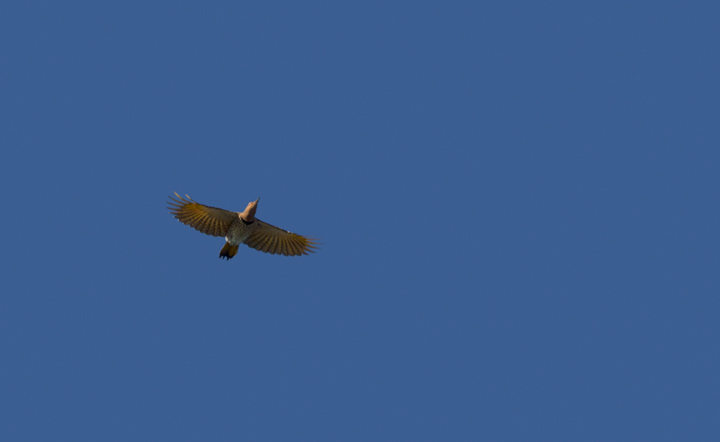
Below: A male Northern Flicker in Somerset Co., Maryland (11/29/2009). The second image shows an undertail view that's difficult to mistake.
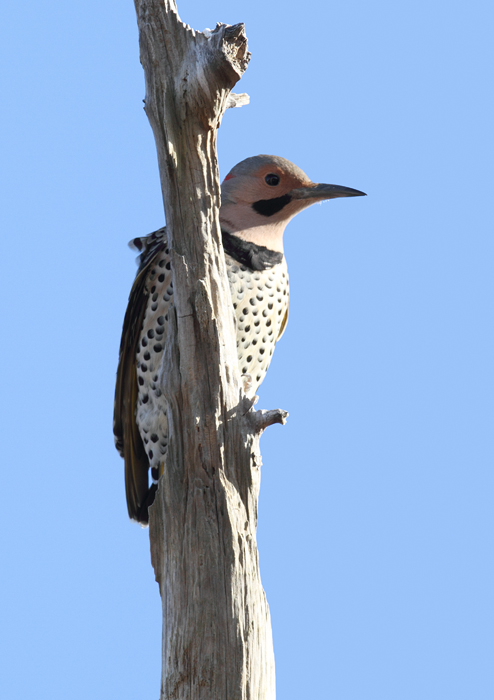
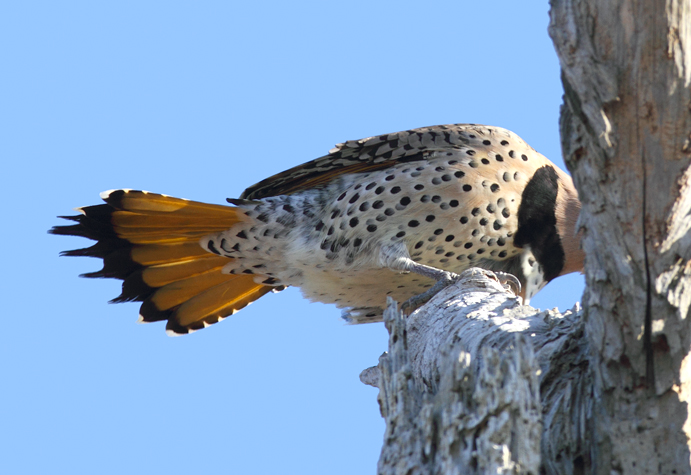
Comments: The most terrestrial of our woodpeckers, the Northern Flicker spends a great deal of time on the ground, foraging for ants and other insects. Flickers are found year-round across most of the U.S., but a large population is migratory, and nests across most of Canada and Alaska. Two very distinct forms of the Northern Flicker--"Yellow-shafted" and "Red-shafted"--were considered separate species until the early 1980s. Here in the East, our "Yellow-shafted" flickers have yellow underwings and undertails, and males have a black mustache. The West's "Red-shafted" flickers have red underwings and undertails, and males have red mustaches. Although they are still quite common, flickers and other cavity-nesters are experiencing some decline due to competition with the introduced and very aggressive European Starling.
